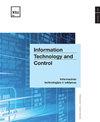Deep Learning Based Cardiovascular Disease Risk Factor Prediction Among Type 2 Diabetes Mellitus Patients
IF 2
4区 计算机科学
Q3 AUTOMATION & CONTROL SYSTEMS
引用次数: 0
Abstract
Type 2 Diabetes Mellitus (T2DM) is a common chronic disease that is caused due to insulin discharge disorder. Due to the complication of T2DM, the outcomes of this disease lead to severe illness, death and cardiovascular disease (CVD). Given a larger number of diabetes patients, it is necessary to find the patients with a high risk of CVD complications. For this, the traditional methods are not sufficient and it is important to develop a deep learning-based efficient quantitative model to predict the risk of CVD among diabetes patients. The major objective of this research is to assess the efficient artificial intelligence approach toward the proposal of a personalized deep learning model that can able to predict the risk of fatal and non-fatal CVD among T2DM patients. First, the unbalanced dataset is preprocessed to make the dataset balanced for processing. Second, the features are reduced and important features are selected using Rank based Feature Importance (RFI) model which will improve the prediction accuracy. Third, the proposed Cascaded Convolution Graph LSTM (CCGLSTM) has been used as a classifier to predict the risk of CVD. Novelty of the work resides on ranking based feature analysis is cascaded with CGLSTM. The proposed model is implemented and experimented with various evaluation metrics using the data from 560 patients of five-year follow-up with T2DM. These evaluated results are compared with the state of-the-art methods and the proposed model is proven to be superior to other approaches in terms of AUC (0.989), Accuracy (98.8%), recall (96.7%), precision (96.8%), specificity (97.4%) and F1-Score (97.5%).基于深度学习的2型糖尿病患者心血管疾病危险因素预测
2型糖尿病(T2DM)是一种由胰岛素分泌紊乱引起的常见慢性疾病。由于T2DM的并发症,该病的结局可导致严重疾病、死亡和心血管疾病(CVD)。鉴于糖尿病患者人数较多,有必要发现心血管疾病并发症的高危患者。因此,传统的方法是不够的,开发一种基于深度学习的高效定量模型来预测糖尿病患者心血管疾病的风险是很重要的。本研究的主要目的是评估有效的人工智能方法,以提出一种个性化的深度学习模型,该模型能够预测T2DM患者致死性和非致死性CVD的风险。首先,对不平衡的数据集进行预处理,使数据集平衡处理。其次,利用基于秩的特征重要性(RFI)模型对特征进行约简,选择重要特征,提高预测精度;第三,将提出的级联卷积图LSTM (CCGLSTM)作为CVD风险预测的分类器。这项工作的新颖性在于基于排名的特征分析与CGLSTM级联。采用560例5年随访的T2DM患者的数据,对所提出的模型进行了实施和各种评估指标的实验。将这些评估结果与现有方法进行比较,发现该模型在AUC(0.989)、准确率(98.8%)、召回率(96.7%)、精密度(96.8%)、特异性(97.4%)和F1-Score(97.5%)方面优于其他方法。
本文章由计算机程序翻译,如有差异,请以英文原文为准。
求助全文
约1分钟内获得全文
求助全文
来源期刊

Information Technology and Control
工程技术-计算机:人工智能
CiteScore
2.70
自引率
9.10%
发文量
36
审稿时长
12 months
期刊介绍:
Periodical journal covers a wide field of computer science and control systems related problems including:
-Software and hardware engineering;
-Management systems engineering;
-Information systems and databases;
-Embedded systems;
-Physical systems modelling and application;
-Computer networks and cloud computing;
-Data visualization;
-Human-computer interface;
-Computer graphics, visual analytics, and multimedia systems.
 求助内容:
求助内容: 应助结果提醒方式:
应助结果提醒方式:


